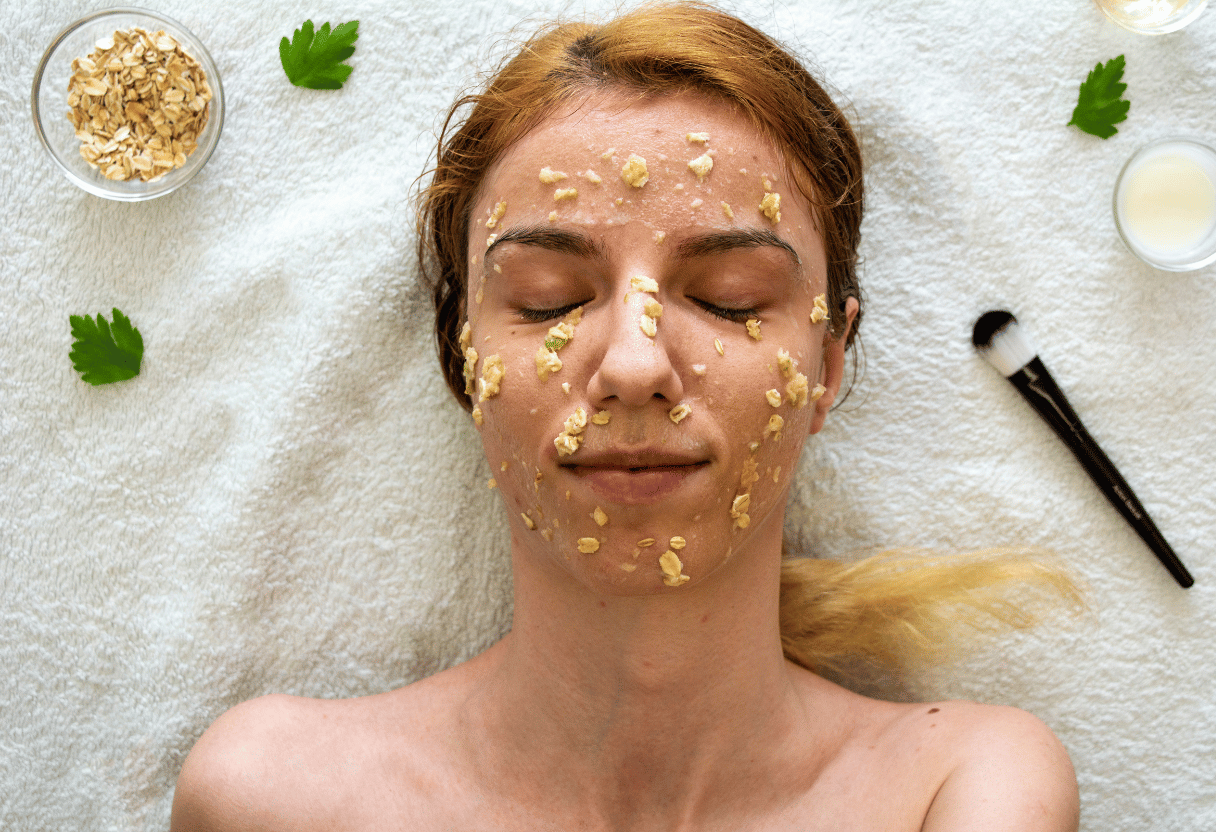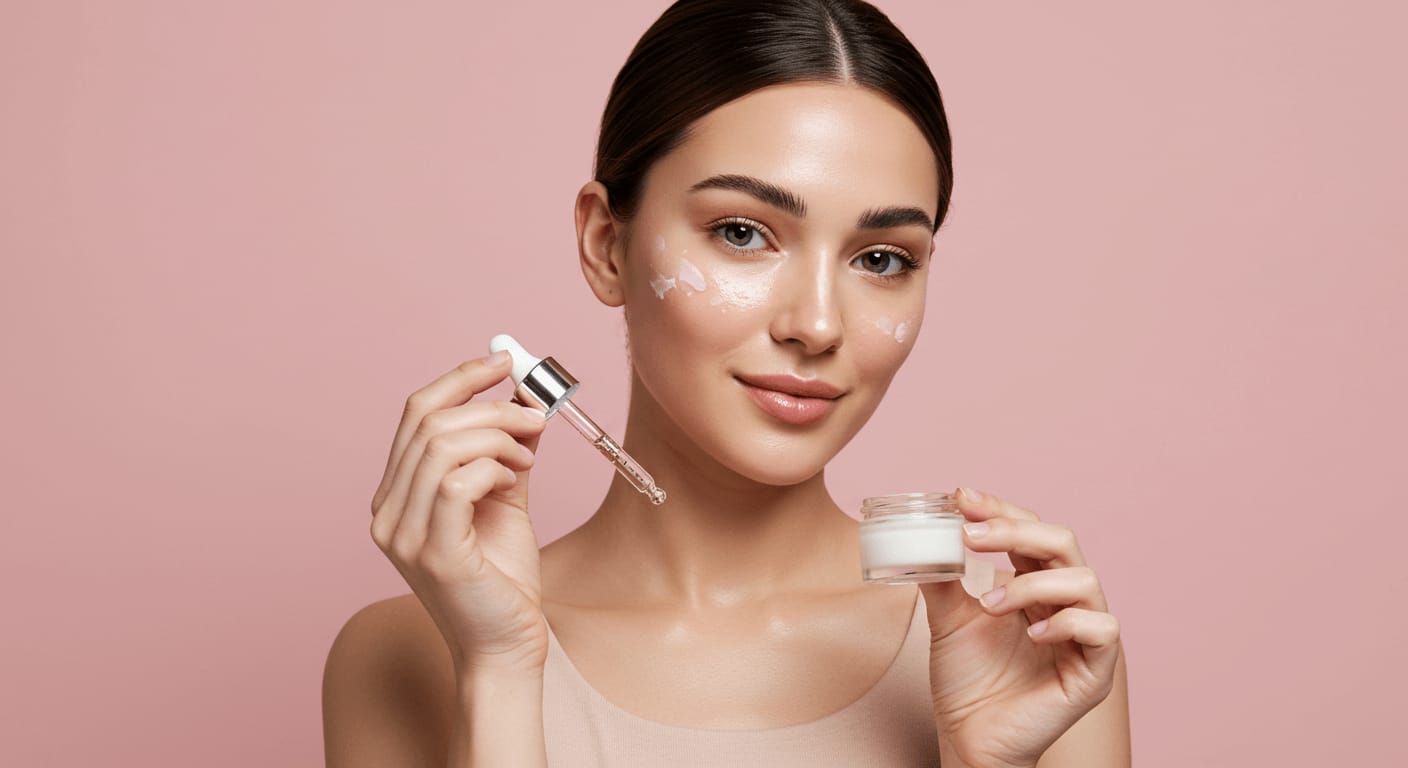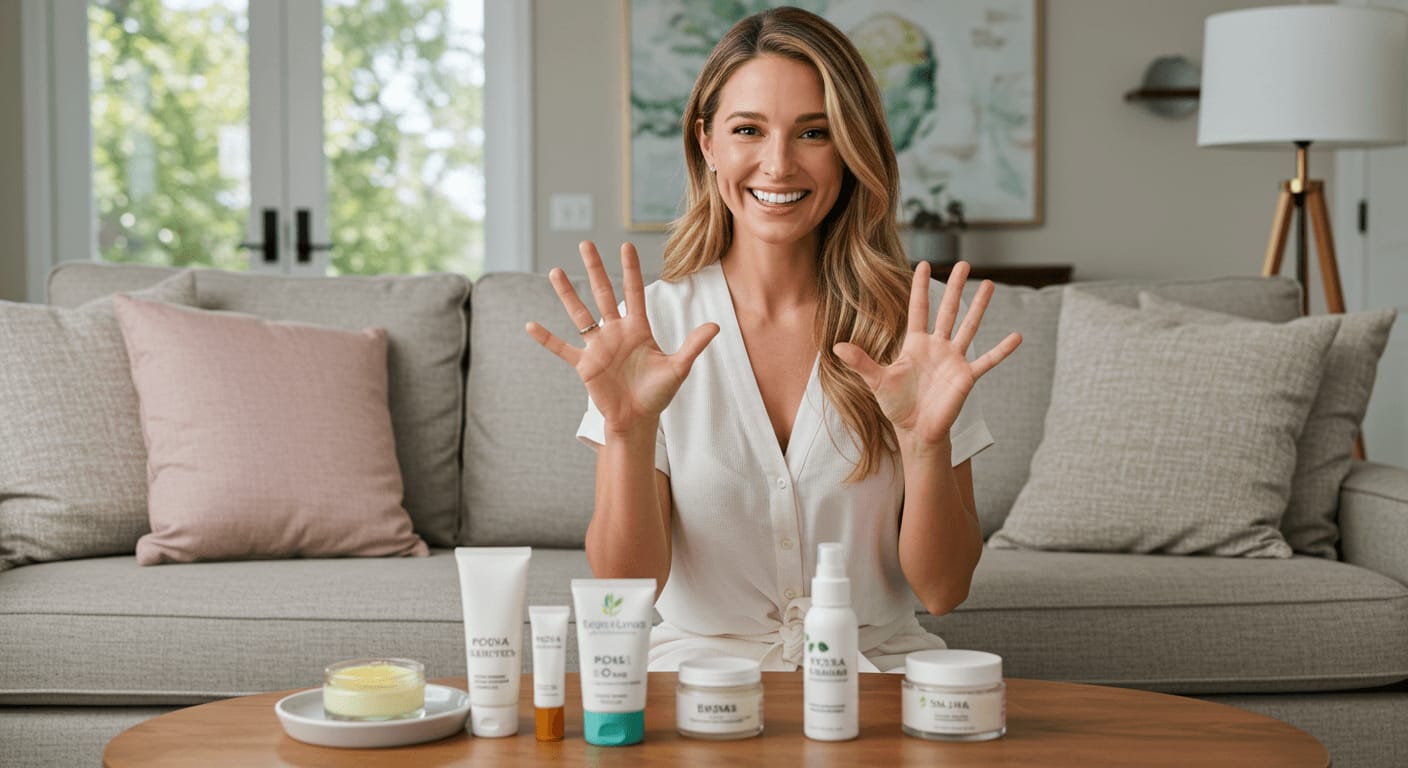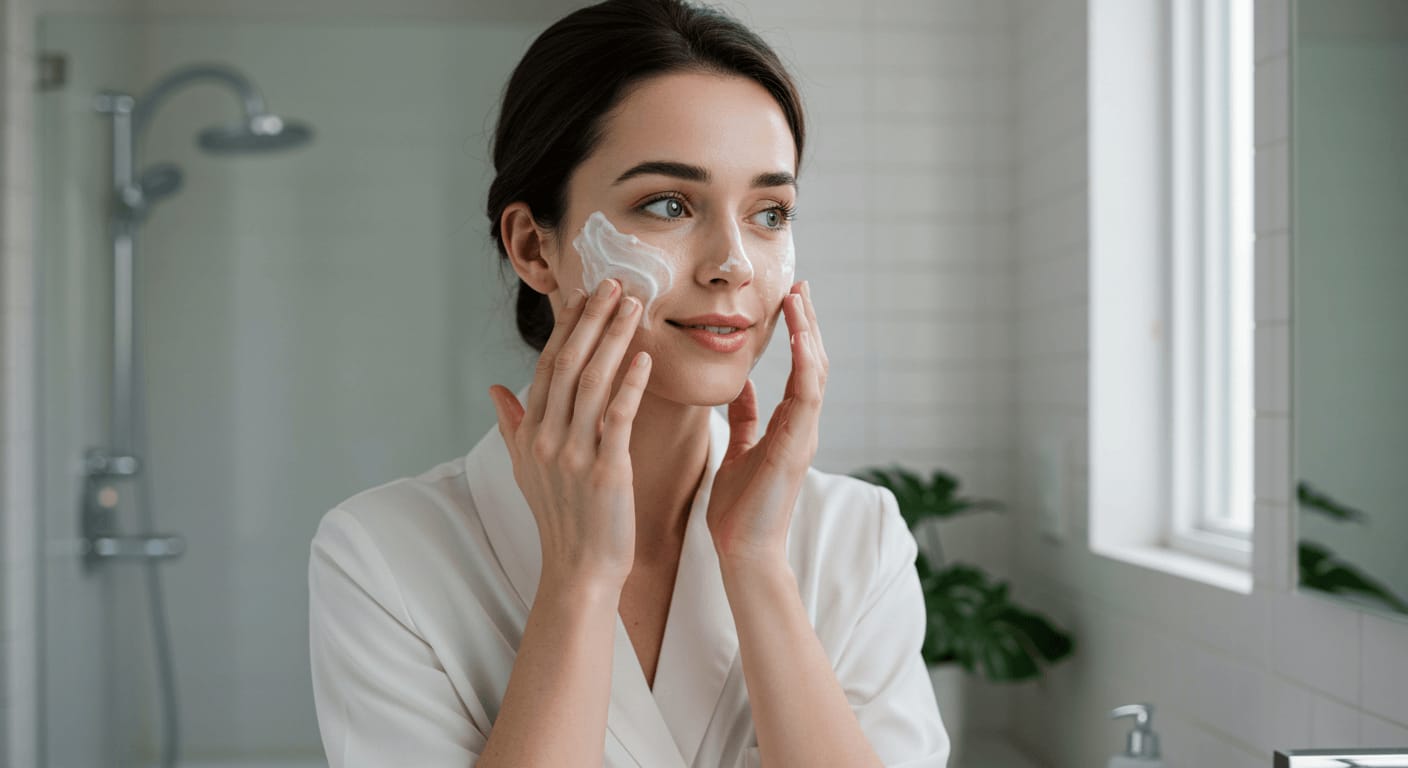Skin care can be simple and effective when you try DIY treatments that utilize natural ingredients. You have the power to enhance your skin’s health with easy recipes that are not only cost-effective but also free from harsh chemicals. This guide will walk you through a variety of treatments that you can create at home, addressing common skin concerns such as dryness, acne, and signs of aging. Embrace your natural beauty by taking charge of your skin care routine with these simple yet potent DIY solutions.
Table of Contents
Key Takeaways:
- Natural Ingredients: Utilizing everyday ingredients like honey, oatmeal, and aloe vera can provide effective skin benefits without harsh chemicals.
- Moisturization: Incorporating homemade moisturizers, such as coconut oil or shea butter mixtures, can help maintain skin hydration and prevent dryness.
- Exfoliation: DIY scrubs made from sugar, coffee grounds, or ground oats can gently remove dead skin cells and reveal a brighter complexion.
- Face Masks: Creating your own face masks using fruits, yogurt, or avocado can target specific skin issues like dryness, dullness, or acne.
- Consistency: Regular practice of these simple skin care treatments is key to achieving and maintaining healthier skin over time.

Types of DIY Skin Care Treatments
The world of DIY skin care offers a variety of treatment options, allowing you to customize your routine based on your unique skin type and concerns. You can explore different methods to enhance your skin health while using ingredients sourced right from your kitchen. Here are some popular DIY skin care treatment types you can try at home:
| Type | Description |
|---|---|
| Natural Ingredients | Using items like honey, avocado, and oats for nourishing masks and scrubs. |
| Chemical Exfoliants | Incorporating products with AHAs and BHAs for effective exfoliation. |
| Essential Oils | Adding oils like tea tree and lavender for their soothing properties. |
| Hydrating Treatments | Using aloe vera and yogurt to deeply hydrate and soothe your skin. |
| DIY Serums | Creating your own serums using carrier oils and vitamins. |
The options available for DIY skin care treatments can empower you to take control of your skin’s health. By understanding the different types and their benefits, you can tailor your regimen to suit your specific needs and preferences. The journey to discovering what works for you can be both fun and rewarding.
Natural Ingredients
Some of the best DIY skin care treatments come directly from nature. Natural ingredients like honey, yogurt, and oats can provide a multitude of benefits. For instance, honey serves as a powerful humectant, helping to lock in moisture, while oats can soothe irritated skin and exfoliate gently if ground finely. Incorporating these types of ingredients allows you to prepare nourishing masks and scrubs without any harmful additives that might irritate your skin. To explore more ideas, check out Top 7 DIY Natural Skincare Recipes.
Some other noteworthy natural ingredients include avocado, rich in fatty acids that promote moisture retention, and olive oil, known for its antioxidant properties. Each ingredient has its unique profile that can target various skin concerns. Experimenting with combinations can lead to beneficial, customized skincare solutions that promote a healthy complexion. For more inspiration, consider the 5 Best Ingredients for Hydrating Masks.
Chemical Exfoliants
On the other hand, chemical exfoliants are another effective way to treat your skin. These include Alpha Hydroxy Acids (AHAs) and Beta Hydroxy Acids (BHAs) that help to slough off dead skin cells, revealing brighter, smoother skin underneath. They work at a deeper level than physical scrubs, providing a thorough cleansing while promoting cell turnover. AHAs are particularly effective for dry skin, while BHAs are suitable for oily or acne-prone skin. To learn more about these exfoliants, visit Top 10 Benefits of Chemical Exfoliants.
The use of chemical exfoliants can significantly enhance your skincare results, but it’s vital to use them correctly. Always conduct a patch test before applying, as overuse can lead to irritation and sensitivity. Additionally, always follow up with a good moisturizer and sunscreen, because chemical exfoliants can make your skin more susceptible to sun damage. The key is to find a balance that allows your skin to reap the benefits without compromising its health. For tips on proper application, read 7 Mistakes to Avoid When Using Exfoliants.

Tips for Effective DIY Skin Care
If you want to ensure the best outcomes for your DIY skin care treatments, it helps to maximize effectiveness by following some vital tips. Start with high-quality ingredients, and make sure to keep your tools and workspace clean. Additionally, pay attention to how your skin reacts to new treatments and adjust accordingly. Here are some easy tips to guide your DIY adventure:
- Always do a patch test before using a new product on your face.
- Incorporate natural ingredients that are suitable for your skin.
- Stay consistent with your treatments to see the best results.
- Use appropriate storage methods for your homemade recipes.
This approach not only enhances the effectiveness of your treatments but also allows you to tailor them to fit your unique skincare needs.
Skin Type Considerations
Considerations should be made based on your specific skin type when selecting DIY skin care recipes. Whether you have oily, dry, combination, or sensitive skin, understanding your unique requirements will help you choose the right ingredients. For instance, those with oily skin may benefit from recipes featuring clay or tea tree oil, while individuals with dry skin might prefer honey or avocado for their moisturizing properties. For more personalized tips, explore Top 5 Ingredients for Every Skin Type.
Adjust the concentration of active ingredients according to your skin’s needs, ensuring that you do not overwhelm sensitive skin with too many active compounds. This personalization will not only enhance the effectiveness of your DIY treatments but also promote healthier, more radiant skin. To avoid common mistakes, read 7 Worst Skincare Blunders for Sensitive Skin.
Safety Precautions
Even as you commence on your DIY skin care journey, prioritizing safety is vital. Always be mindful of the ingredients you’re using, as some may cause allergic reactions or irritation if not handled properly. Begin by researching potential allergens and confirm that each item is suitable for your skin type. Furthermore, make sure to keep homemade products out of reach of children and adhere to recommended usage guidelines. For a deeper understanding, check out 10 Best Practices for DIY Skincare Safety.
With a little diligence, you can ensure that your DIY skin care treatments remain safe and effective. Always check the expiry dates of your ingredients, and dispose of any products that look or smell off. Keep in mind, using ingredients like vital oils can pose risks if applied in large amounts; therefore, dilution with a suitable carrier oil is often advisable. Following these precautions can help you enjoy the positive aspects of DIY skin care while minimizing any associated risks. For additional advice, consider 7 Common Mistakes to Avoid in DIY Skincare.
Step-by-Step Guide to Popular Treatments
Despite the overwhelming number of commercial skin care products available today, many people are turning to simple DIY treatments that can be made at home. These natural options often utilize ingredients that you probably already have in your kitchen, making them cost-effective and easy to implement. For more ideas, you can explore 21 Homemade Skincare Recipes You Can Make Cheaper …. Below is a table summarizing some popular DIY skin care treatments you can try.
| Treatment | Ingredients |
|---|---|
| Honey Face Mask | Honey, Lemon Juice, Oatmeal |
| Avocado Face Mask | Avocado, Olive Oil, Honey |
| Sugar Scrub | Sugar, Coconut Oil, Essential Oils |
| Coffee Peel | Coffee Grounds, Coconut Oil, Sugar |
Homemade Face Masks
Step by step, creating homemade face masks can enhance your skincare routine significantly. For a basic honey face mask, combine two tablespoons of honey with half a tablespoon of lemon juice and one tablespoon of oatmeal. Apply this mixture to your clean face, leaving it on for about 15-20 minutes before rinsing with warm water. Honey’s natural antibacterial properties can soothe your skin, while oatmeal acts as an excellent exfoliant. For more DIY ideas, explore Top 5 Homemade Masks for Every Skin Type.
Another excellent option is an avocado face mask. Simply mash half a ripe avocado and mix it with a tablespoon of olive oil and honey. Apply this mixture for a hydrating treatment that’s perfect for dry skin. Avocado is packed with healthy fats and vitamins, making it incredibly nourishing for your complexion. For tips on hydration, check out 7 Best Ingredients for Dry Skin Masks.
DIY Scrubs and Peels
If you’re looking for a quick way to exfoliate, creating your own scrubs and peels at home is both easy and rewarding. For a simple sugar scrub, combine one cup of sugar with half a cup of coconut oil and a few drops of your favorite essential oil. Gently scrub this mixture onto your skin, rinsing well with warm water to reveal smoother, softer skin. To learn more about exfoliation, visit Top 10 Benefits of Natural Body Scrubs.
Using coffee grounds is another fantastic option for a revitalizing peel. Mix used coffee grounds with sugar and coconut oil, rubbing the blend onto your skin. Not only does it exfoliate, but it also helps to improve circulation, leaving your skin looking more radiant. Always be sure to do a patch test first to check for any skin sensitivities before applying these scrubs to your entire body. For more exfoliation tips, explore 7 Common Mistakes When Using DIY Scrubs.
Masks can serve various purposes, from hydration to exfoliation and acne control. With these homemade scrubs and peels, you can customize your skincare experience in a natural way. Always use fresh ingredients for the best results, and consult a dermatologist if you have specific skin issues. By taking the time to care for your skin, you can achieve a glowing, healthy complexion from the comfort of your home.

Factors to Consider
Unlike commercial skin care products that often promise quick results, your approach to creating simple DIY skin care treatments requires a deeper understanding of your own unique skin needs. There are several key factors to consider before stepping into the world of natural ingredients and homemade remedies:
- Skin Type: Understand if your skin is oily, dry, or combination to select suitable ingredients.
- Allergies: Be aware of any known allergies to avoid adverse reactions.
- Ingredients: Choose skin-friendly natural ingredients that provide specific benefits.
- Application Frequency: Determine how often you should apply treatments to avoid over- or under-using.
Knowing these factors will help you create effective and safe skin care treatments tailored to your individual needs. By taking the time to assess your skin, you can experiment with various formulations and ultimately achieve your desired skin health.
Skin Sensitivity
The first thing to acknowledge is that everyone has different levels of skin sensitivity. Some individuals may have skin that reacts negatively to even the mildest of ingredients, while others can tolerate a wider range of formulations. When engaging in DIY skin care, it is crucial to conduct a patch test. This means applying a small amount of the product to a discreet area and waiting for a reaction. If any irritation occurs, it’s advisable to stop using that particular ingredient. For tips on sensitive skin care, check out Top 7 Gentle Ingredients for Sensitive Skin.
Additionally, consider how your skin interacts with various environmental factors. For example, products that may be suitable for summer might not be ideal in winter due to changes in temperature and humidity. Tailoring your DIY skin care routine to accommodate your skin’s sensitivity will allow you to better maintain a healthy and vibrant complexion. To learn more about seasonal adjustments, visit 5 Best Skincare Practices for Winter.
Aging and Skin Health
There’s no denying that as you grow older, your skin undergoes natural changes that can affect its appearance and health. These changes often include loss of elasticity, increased dryness, and the appearance of fine lines and wrinkles. When creating DIY treatments for aging skin, opt for ingredients that offer hydration and antioxidant benefits, such as hyaluronic acid or Vitamin C. These components can help revitalize your complexion and combat signs of aging effectively. To explore effective ingredients, check out Top 10 Anti-Aging Ingredients for Radiant Skin.
Skin aging is an inevitable process, but you can certainly mitigate its visible effects through mindful DIY treatments. Incorporating botanicals such as green tea or aloe vera into your routine can provide your skin with soothing properties, slowing down the aging process. Moreover, regularly moisturizing and protecting your skin with natural oils like jojoba or argan oil will keep it nourished and supple. Furthermore, both dietary choices and hydration play significant roles in your skin’s health, emphasizing the importance of a holistic approach to youthful skin. For lifestyle tips, explore 7 Best Practices for Youthful Skin at Any Age.
Pros and Cons of DIY Treatments
To better understand the value of DIY skin care treatments, you should explore their benefits and drawbacks. Below is a breakdown of important pros and cons to consider:
| Pros | Cons |
|---|---|
| Cost-effective solutions | Potential for skin irritation |
| Customized for your skin type | Risk of allergic reactions |
| Access to natural ingredients | Unverified effectiveness |
| Empowers your skincare routine | Time-consuming preparation |
| Environmentally friendly options | Possible contamination risks |
Advantages of Natural Remedies
Even as you explore DIY skin care treatments, the advantages of using natural remedies emerge as compelling reasons to give them a try. Natural ingredients like honey, aloe vera, and oatmeal often provide soothing benefits that are gentle on your skin. They are rich in nutrients and antioxidants, which can help improve your skin’s overall appearance and health. For more natural options, explore Top 5 Ingredients for Radiant Skin.
Moreover, using natural remedies allows you to control what goes on your skin, reducing exposure to harsh chemicals and additives found in commercial products. This level of control can be empowering, making it easy for you to find effective treatments tailored to your individual needs. Natural remedies often have fewer side effects, making them a safer alternative for those with sensitive skin. For guidance on sensitive skin care, check out 7 Best Natural Remedies for Sensitive Skin.
Potential Risks and Downsides
To thoroughly enjoy the benefits of DIY treatments, you also need to be aware of the potential risks and downsides associated with them. While natural ingredients can be effective, they are not without their limitations and dangers. For instance, some ingredients may not be suitable for everyone and can lead to severe allergic reactions or skin irritations. It’s vital to patch-test any new remedy before applying it broadly to your skin. For tips on safe DIY practices, read 10 Common Mistakes to Avoid in Natural Skincare.
Advantages of DIY treatments also come with imperative considerations. The lack of regulation in natural products means that some may not contain the claimed ingredients or concentrations, which might reduce effectiveness. Additionally, the process can become tedious and may require extensive research to navigate the myriad of home remedies available. Always ensure that you are using safe and clean ingredients and that you follow proper guidelines to minimize risks associated with DIY skin care. For additional insights, check out 7 Tips for Safe and Effective DIY Skincare.
Best Practices for Application
After you’ve selected the right DIY skin care treatment for your needs, the way you apply these treatments can significantly influence their effectiveness. Begin by ensuring that your skin is clean and free of any products that could interfere with absorption. Use gentle motions while applying the treatment to avoid irritating your skin. It is imperative to use clean tools or your hands, but make sure they are thoroughly washed to prevent any unwanted bacteria from coming into contact with your skin.
Frequency and Timing
Frequency of application can greatly affect the outcome of your skincare routine. Depending on the type of treatment, some can be used daily, while others may be better suited for weekly or bi-weekly application. For instance, exfoliating masks might be beneficial once a week, while hydrating treatments could be applied multiple times throughout the week. Adapting the frequency based on your skin’s response is key; pay attention to how your skin feels and adjust accordingly. For guidance on balancing your routine, explore Top 7 Tips for an Effective Skincare Schedule.
Post-Treatment Care
There’s also a vital aspect of post-treatment care to consider, as it helps to enhance the benefits of your DIY skin treatments. Immediately after applying a treatment, consider how you can protect and nourish your skin. For example, you should avoid exposure to harsh sunlight or pollution right after using a mask or exfoliant. Instead, opt for a gentle moisturizer to lock in hydration and soothe your skin, as well as to help reinforce the protective barrier. For post-treatment essentials, check out 5 Best Practices for Hydrated and Protected Skin.
Care for your skin following any DIY treatment is equally important; this includes applying a suitable moisturizer and sunscreen during the daytime. When using treatments with active ingredients, such as acids, it’s wise to apply them in the evening to minimize potential sun sensitivity. Additionally, avoid harsh scrubbing or the use of other active treatments on the same day to prevent irritation. Ultimately, the way you care for your skin post-treatment can maximize any benefits you’ve gained, ensuring you achieve that healthy glow. For additional advice, explore 7 Common Mistakes to Avoid After Skincare Treatments.
To wrap up
Conclusively, engaging in simple DIY skin care treatments can be a rewarding journey for your skin’s health and appearance. By utilizing natural ingredients readily available in your kitchen, you can create effective solutions tailored to your unique skin concerns, whether that’s dryness, acne, or a lackluster complexion. This approach not only allows you to take control of your skin care routine but also empowers you to experiment and discover what works best for you.
As you begin on this DIY adventure, always prioritize safety and conduct patch tests to avoid any adverse reactions. Take the time to research and understand the properties of each ingredient you use, ensuring they align with your skin type and goals. With patience and consistency, your efforts can lead to healthier, glowing skin while fostering a deeper connection to the products you apply. Enjoy the process, and embrace the benefits of natural skin care tailored specifically for you.
FAQ
What is the best homemade skin care?
The best homemade skincare varies depending on your skin type, but a few universally loved options include:
Honey Mask: Honey is naturally antibacterial and moisturizing, making it ideal for acne-prone or dry skin. Apply raw honey to your face, leave it on for 15 minutes, and rinse.
Oatmeal Scrub: Mix oatmeal with yogurt or water to create a gentle exfoliating scrub that soothes irritation and removes dead skin cells.
Aloe Vera Gel: Apply fresh aloe vera gel directly from the plant to hydrate and soothe the skin.
What is the simplest skin care routine?
A simple skincare routine includes three essential steps:
Cleanse: Use a gentle cleanser to remove dirt and impurities.
Moisturize: Apply a moisturizer suited for your skin type to keep it hydrated.
Protect: Use sunscreen with SPF 30+ during the day to shield your skin from UV damage.
Optional additions: Add a toner or serum if you have specific skin concerns, but stick to the basics for simplicity.
How can I take care of my skin naturally at home?
To care for your skin naturally:
Hydrate: Drink plenty of water to maintain skin elasticity and reduce dryness.
Eat Skin-Friendly Foods: Incorporate fruits, vegetables, and healthy fats for glowing skin.
Use Natural Ingredients: Try masks with ingredients like honey, turmeric, or avocado.
Regular Cleansing: Wash your face twice a day with a gentle, natural cleanser like diluted rose water.
Avoid Harsh Chemicals: Choose products with natural, organic ingredients, or make your own.
How to make skincare with household items?
You can create effective skincare products using common household items:
Face Mask: Mix mashed banana with honey for a hydrating and nourishing mask.
Toner: Combine equal parts apple cider vinegar and water for a natural toner.
Exfoliator: Mix sugar and olive oil for a gentle scrub.
Moisturizer: Use coconut oil as a natural moisturizer, especially for dry areas.
These simple DIY remedies are cost-effective, natural, and easy to make!
What are some effective DIY ingredients for skin care?
There are multiple natural ingredients you can use for DIY skin care treatments. Some effective options include coconut oil, honey, aloe vera, oatmeal, and yogurt. Coconut oil is excellent for hydration, honey has antibacterial properties, aloe vera soothes irritation, oatmeal can gently exfoliate, and yogurt contains lactic acid for a mild exfoliating effect. Always do a patch test before applying any new ingredient to ensure it doesn’t cause irritation.
How do I create a simple honey face mask?
A honey face mask is very easy to make. Simply take 1-2 tablespoons of raw honey and apply it directly to your clean face, avoiding the eye area. Leave it on for about 20 minutes, then rinse with warm water. Honey is not only moisturizing but also has antibacterial properties, making it great for acne-prone skin.
Can I use necessary oils in my DIY skincare routines?
Yes, necessary oils can be a wonderful addition to your DIY skin care. However, they should always be diluted with a carrier oil, such as jojoba or almond oil, before applying to your skin. Some beneficial necessary oils include tea tree oil for acne, lavender oil for calming the skin, and geranium oil for balancing oil production. Always check for skin sensitivities and perform a patch test.
How often should I perform DIY skin treatments?
The frequency of DIY treatments can vary depending on your skin type and the specific treatment used. Generally, using a face mask once or twice a week is effective for most skin types. Exfoliating treatments can be done every 1-2 weeks, while moisturizing treatments can be applied more frequently. It’s important to pay attention to how your skin reacts and adjust accordingly.
Are DIY skin care treatments suitable for all skin types?
While many DIY skin care treatments can be beneficial, not all are suitable for every skin type. For example, oily skin may not respond well to heavy oils while dry skin may benefit from them. It’s necessary to tailor treatments to your specific skin type. If you have sensitive skin, opt for milder ingredients and always conduct a patch test before trying new treatments.



























0 Comments